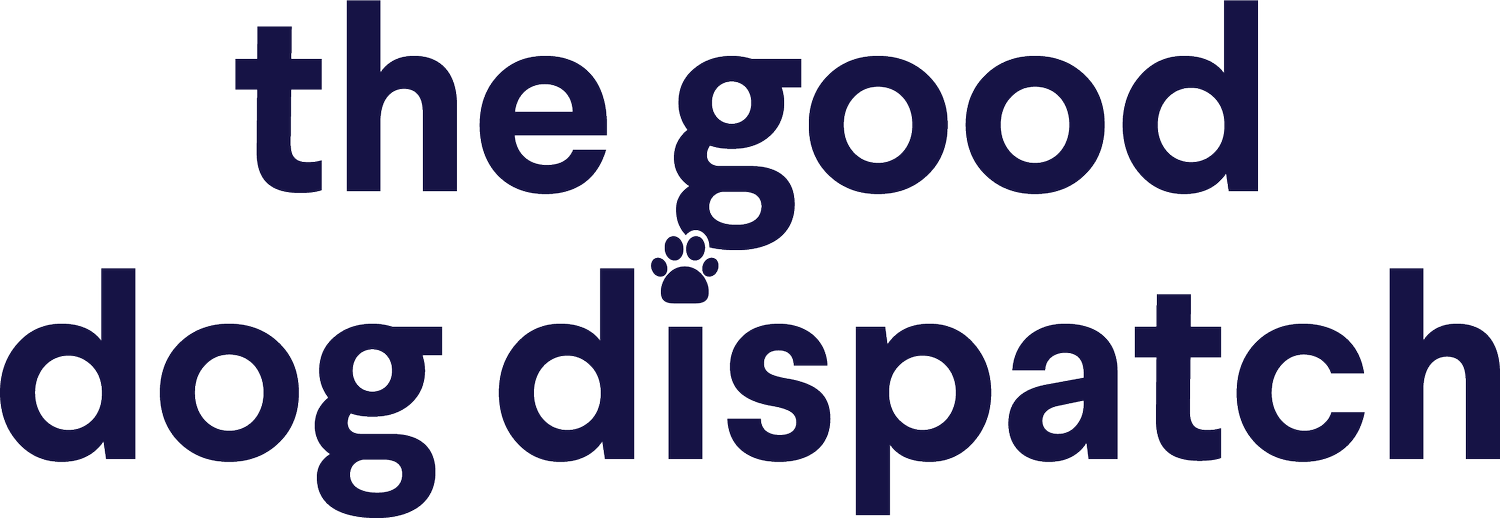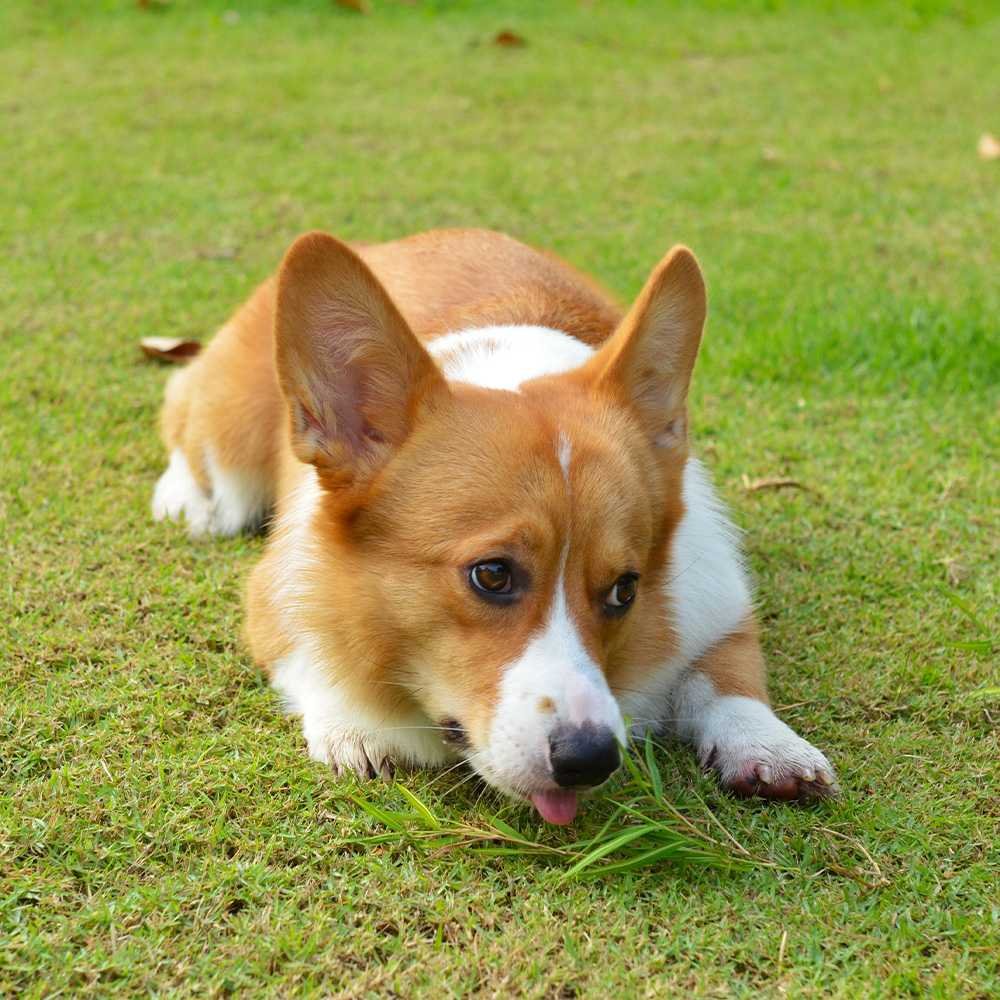Why Do Dogs Eat Grass?
Dogs eat grass for various reasons – some are harmless and some a sign that something else may be wrong. Read on to discover why dogs eat grass.
As pet parents, we’ve all caught our dogs licking their teeth after taking a big, heaping mouthful of grass to the face, chomping away like the herbivores they think they are.
Fun fact — dogs are not herbivores!
So what is the root cause of this? (Pun absolutely intended). Why do dogs eat grass?
Diet Deficiency
One theory that explains why dogs eat grass puts the blame on gaps in their diet.
If your dog’s nutritional needs aren’t being met, then they may turn to a big, leafy canine salad (aka your lawn).
Diet deficiencies are typically rooted in a lack of vitamins, nutrients, or minerals in your dog’s daily food consumption.
It may be hard to understand why your pup is turning to turf when they’re being fed two or three delicious meals per day.
Maybe your beloved canine just isn’t jiving with the food that you’re giving them…
…or maybe that food isn’t as quality as the packaging makes it out to be.
Supplements Can Help!
Talk to your vet about giving a supplement to your dog that provides extra nutrition in the form of essential nutrients, omegas, and probiotics. These supplements can help balance out your dog’s nutrition and support their overall health.
Our dog multivitamin here at Finn supports your pup’s wellness holistically, and makes a great addition to your dog’s diet – even if it’s already balanced and nourishing.
With B vitamins for energy and metabolism, probiotics for gut health, CoQ10 for immune support, healthy fats for skin and coat, and glucosamine, chondroitin, and MSM for joint support, our aim is to give your pup everything they need to thrive.
Is Your Dog Bored?
Okay, let’s be real here…sometimes dogs just get bored.And your dog might be eating grass out of boredom – plain and simple.
Canines are curious creatures that will get bored if they’re not provided the right amount of physical and mental stimulation. If you catch your dog eating up the yard there are a few things you can do to help.
Exercising
Keeping your dog physically active during the day is a good way to combat boredom. It’s understandable if it’s tough to step away from your desk numerous times through your shift, but even a brief 15-minute walk down the street or a game of fetch makes a difference.
Training
All dogs need to know their basic commands: sit, down, stay, and come.
However, some dog breeds like sporting and working breeds (think English springer spaniels and labrador retrievers) could benefit from the additional mental stimulation that comes from training more complex commands.
After you master the big four above, start pushing the boundaries with these practical commands:
Give: Having your dog place an item into your hand
Bring (it here): Having your dog bring you an item and place it into your hand
Bring (to mom/dad): Having your dog bring an item to another household member
Pick it up: Picking up an item on the floor and placing it in your hand
After your dogs learn more complex commands, consider giving them a job. Maybe you train them to pick up items that you drop, or maybe they can pull doors open for you when you bring the groceries in. There’s a lot that dogs can do with the right guidance!
It also doesn’t have to be all work and no play — you can also work toward training these fun, easy tricks:
Shake: Having your dog place their paw in your hand
Sit pretty: Having your dog sit up on their hind legs
Twirl: Having your dog spin on command
Give me a kiss: Having your dog kiss or boop your nose on command
Kibble-Dispensing Toys
These toys are a great place to start as they usually just require the push of a button. When the button is pushed, a little treat is released from the toy. It’s all about incentive here. You’re giving your dog a reason to not only engage but to stick with it.
Some other designs have a little hole in a hollow ball where you can insert treats, then leave it to your dog to roll those treats back out (which is a lot harder than it sounds without opposable thumbs).
By design, these types of interactive toys catalyze your dog’s instincts and require them to use a little creativity to get to the grand prize. They’ll keep your dog’s focus and prevent them from turning to your lawn for entertainment.
Puzzles
These are a great way to keep your pup busy as well. They require your dog to solve a problem, which is a great challenge that encourages mental stimulation and brainpower. The mental stimulation will keep your pooch on their toes and hopefully reduce their boredom.
Pro Tip: Remember to buy the level of difficulty that makes the most sense for your furry friend. Always consider your dog’s breed, age, and weight before purchasing a toy. A puzzle that is too challenging will leave your pooch frustrated and more inclined to give up. The goal is to keep them busy enough so that they don’t turn to destructive behavior.
Natural Instincts
Keep in mind that dogs are animals. Before dogs were domesticated, they were wild, and they ate what they could to fill out a well-balanced diet. Sometimes, their diet included grass.
Dogs are neither carnivores nor herbivores. In fact, they’ll consume anything that helps fulfill their basic dietary requirements.
Over time, your dog’s digestive system, dietary needs, and food cravings have evolved to fit the lifestyle of a domesticated animal. Keep this in mind as you go to reprimand them for eating the border of your backyard garden.
Keeping Natural Instincts in Check
The goal is to tap into your dog’s natural instincts before they have an opportunity to turn to destructive behavior. There are a couple of ways to do this. Interactive toys like those listed above are a great way to satisfy your dog’s natural hunting instincts.
These toys will help fulfill your dog’s physical and emotional needs that date back to their ancestors. Another way to satisfy your pup’s natural instincts is to give them something to chew on. Chewing will not only keep them busy but will also promote healthy teeth and gums.
Fetch and tug are a great way to wear out your dog’s natural instincts as well. Thousands of years ago, dogs were taught to hunt food for their humans and bring them back for meals.
Because of that, certain dogs have been bred to retrieve non-food-related items. Today, many dogs have an ingrained disposition to chase after objects, bring them back to their humans, and drop them. Get moving with a healthy game of fetch at the park or in your own backyard.
Stress
Grass eating can function as mindless comfort, similar to the nervous ticks of human beings when they are overwhelmed — think nail-biting, toe-tapping, and so on. There is a chance that your dog is eating grass out because they are stressed out.
Calming Your Dog
There are plenty of ways to ease your Nervous Nellie. Try a calming aid — it’s like a chill pill for your pup that can help with stress and hyperactivity. Opt for a calming aid that is formulated with naturally relaxing ingredients like chamomile, melatonin, or L-theanine.
Crates are proven to ease stress and anxiety in pets, too. By getting your pup used to their crate, this place can act as a safe haven. You’ll want to teach your dog that a crate is a pleasant place for snoozing, soothing, lounging, people watching, and enjoying treats in peace. It’s a stress reliever and a place for your dog to recharge.
Exercise and physical activity are effective stress reducers as well. Going for a walk, playing fetch, or bringing your dog to a fenced-in park to run can help release tension. Whether it be a beach trip, throwing a ball, or playing frisbee — get your pup moving!
When Does Eating Grass Become a Problem?
While your pooch eating grass isn’t necessarily cause for alarm, you’ll want to supervise them to make sure that this behavior doesn’t become excessive.
As mentioned previously, excessive grass-eating could be a sign of an underlying medical issue. If this is the case, you might notice vomiting, diarrhea, weight loss, decreased appetite, blood in your dog’s stool, or excessive lip licking. If you notice any of these symptoms, consult your dog’s vet.
In addition, when your dog turns to turf, they might be snagging other things in the grass that are cause for alarm. For instance, there are certain mushrooms in the ground that pups absolutely cannot eat. Fungi toxicity is real. If your dog has eaten a toxic mushroom, you might notice weakness, lethargy, lack of coordination, and seizures.
If your dog is exhibiting any of these symptoms, get them to a vet immediately. Some mushrooms can be a threat to your dog’s life. Herbicides and pesticides that are on the surface of the grass can also be harmful to your dog’s health. These are usually toxic to your pooch and require immediate veterinary attention.
Conclusion
To conclude, there are several reasons why dogs eat grass. While it’s not necessarily a bad thing, you should keep an eye on your pup’s grass intake. Too much of anything is never a good thing. Diet deficiency, boredom, your pup’s natural instincts, and canine restlessness are all potential motives for your pooch to want to go for the greens.
Luckily, there are steps you can take to stop your dog from snacking on grass. Supplements, interactive toys, physical stimulation, fetch, tug, and crate training can help your dog get out of the habit of eating grass.
It’s never a bad idea to consult your veterinarian to confirm that your canine companion is healthy and thriving and that there are no underlying medical issues.
Sources:
Why Does My Dog Eat Grass? | American Kennel Club
Why Dogs Eat Grass | VCA Animal Hospital
How To Keep Your Dog Entertained Indoors | American Kennel Club





